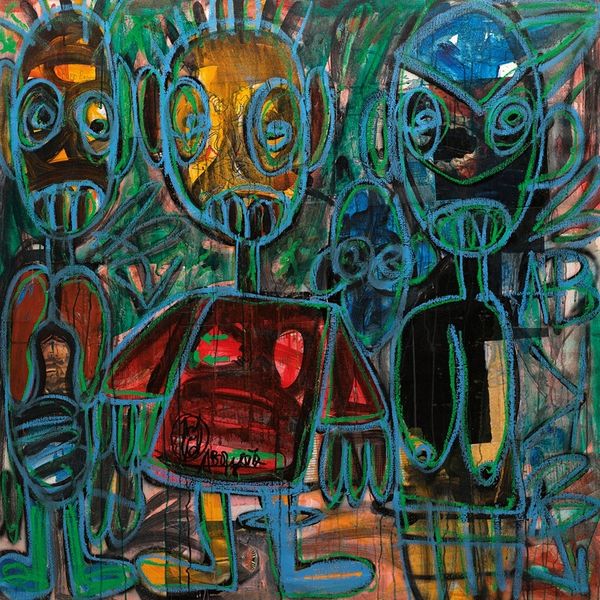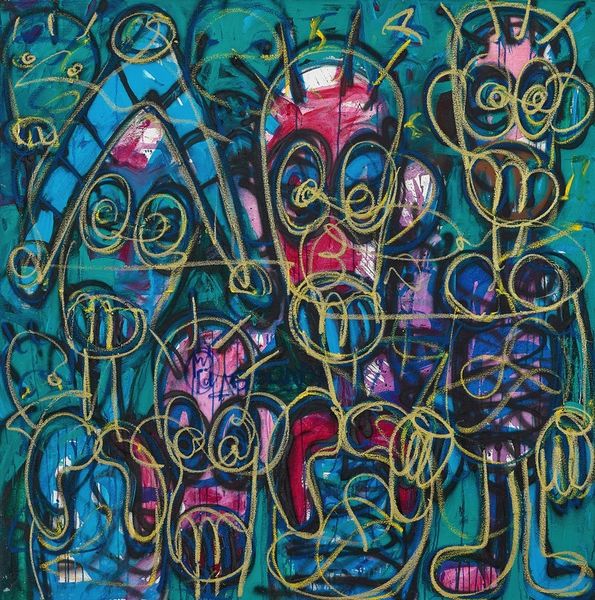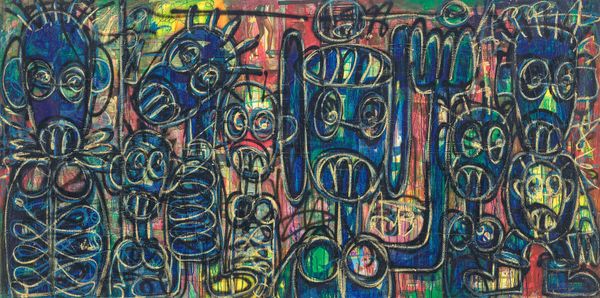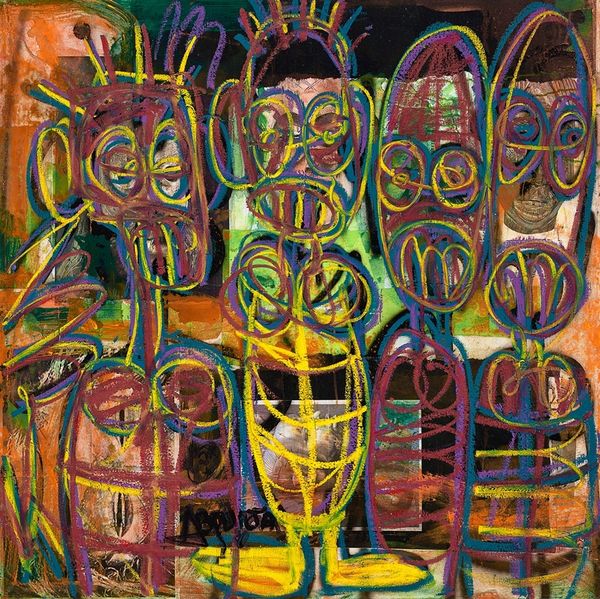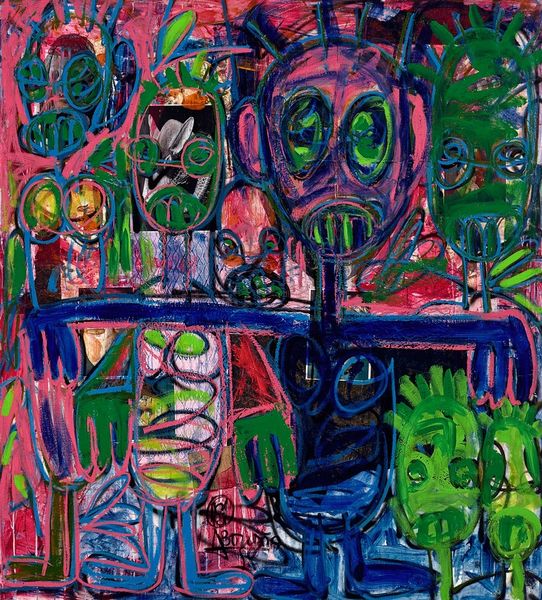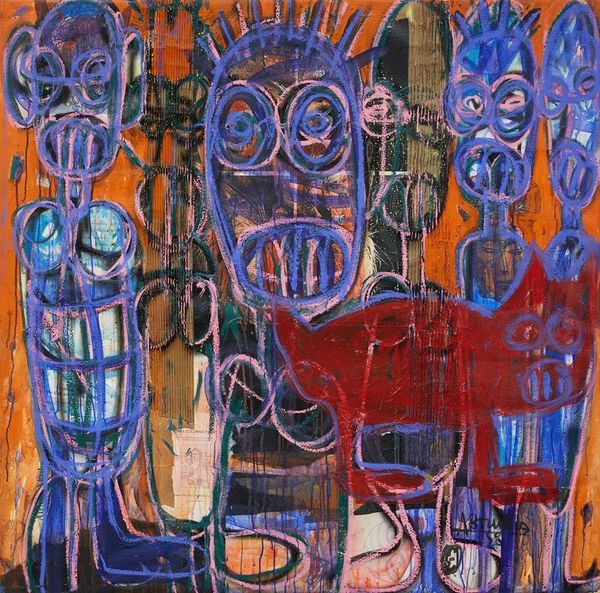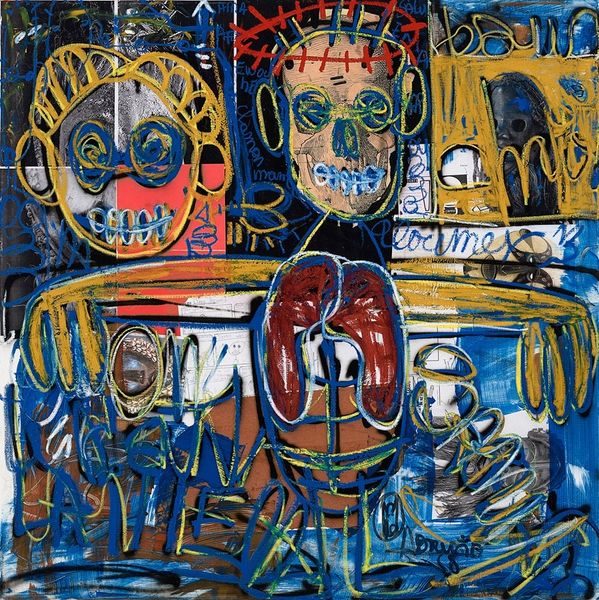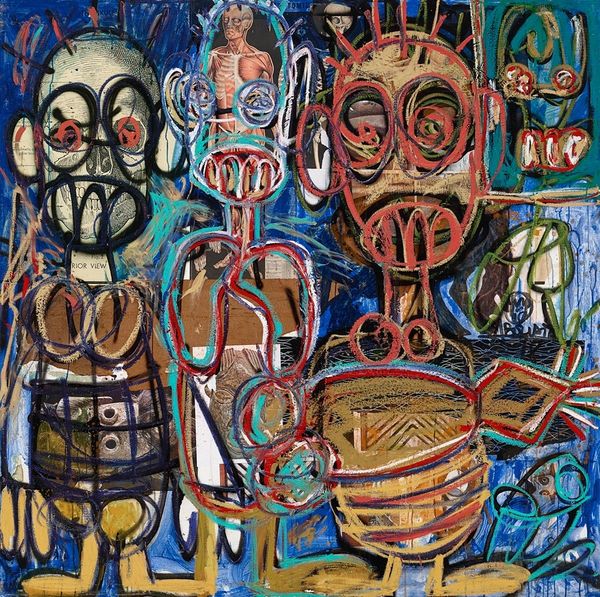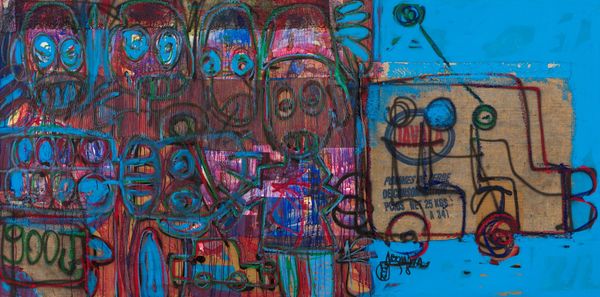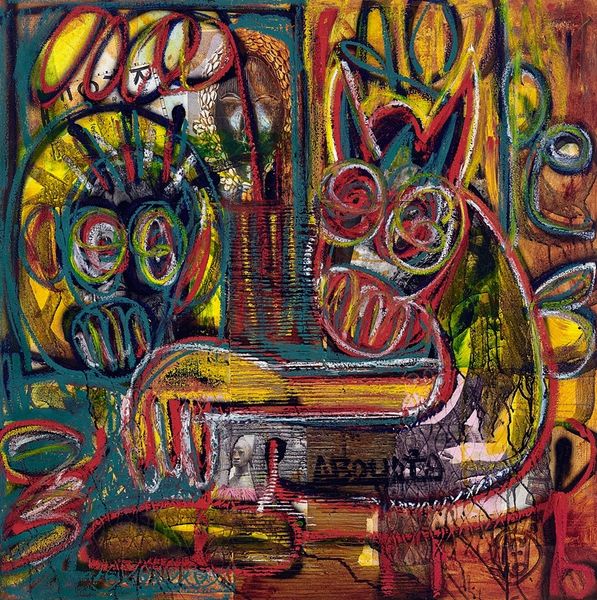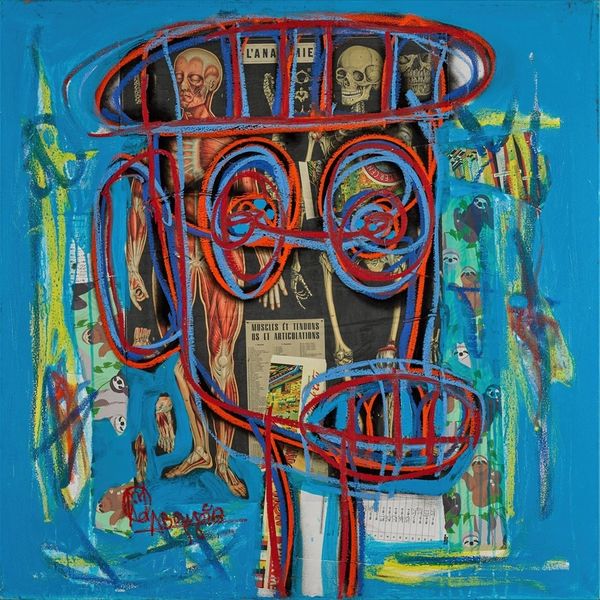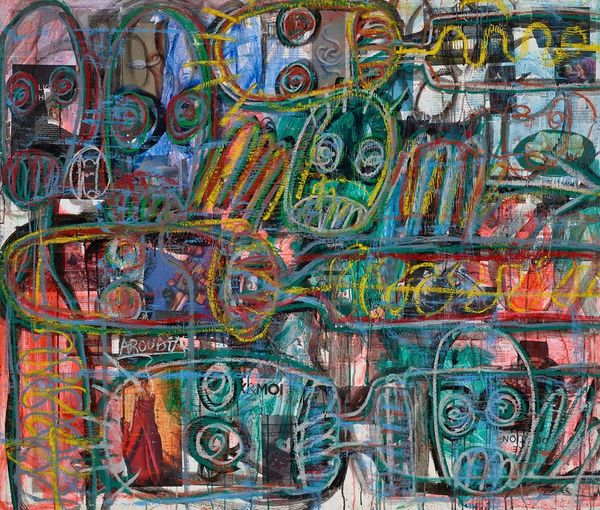
Copyright: Modern Artists: Artvee
Editor: Here we have Aboudia's mixed-media painting, "Upside Down Rightside Up," created in 2021. The intensity of the colors and overlapping images create a strong sense of urgency. What strikes you most about this piece? Curator: The imagery layered within those sketched faces is incredibly potent. Do you notice how the artist uses anatomical drawings, almost like windows into the figures' minds or souls? The bones, organs, the scientific gaze... They become potent symbols of vulnerability and the fragility of life itself. Editor: I see what you mean. It’s as if he's contrasting the raw, street art style with a more formal, clinical perspective on the human body. Curator: Exactly! And it’s not a random juxtaposition. Aboudia often draws upon his experiences of growing up in Côte d'Ivoire. Can you imagine the weight those images carry in a place with limited access to medical care? The "right side up, upside down" nature points towards something deeply symbolic. Does that resonate with your understanding of appropriation? Editor: It does, actually. The title itself implies an inversion, a questioning of accepted norms and visual languages. Curator: Yes! It's as if he's turning the traditional portrait on its head, both literally and figuratively. Those child-like sketches, reminiscent of graffiti, serve as cultural memory and continuity in an urban landscape, imbued with energy. Editor: It's fascinating how the rawness of the medium and the unsettling anatomical imagery can create such a powerful emotional impact. Curator: Indeed. By juxtaposing seemingly disparate elements, Aboudia gives a striking comment on existence, mortality, and what images can mean in varying cultures and contexts. Editor: I'll definitely look at Aboudia’s work with a new perspective going forward! Thank you.
Comments
No comments
Be the first to comment and join the conversation on the ultimate creative platform.
